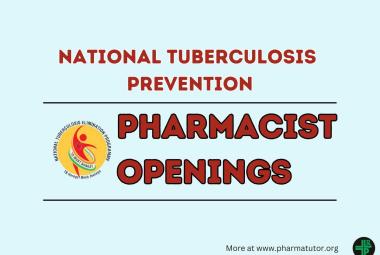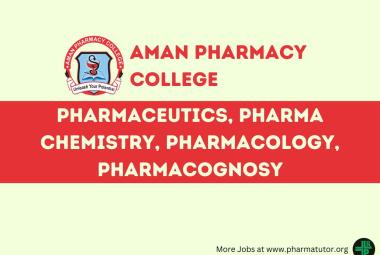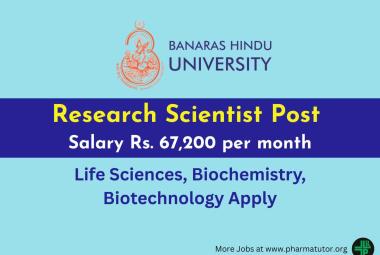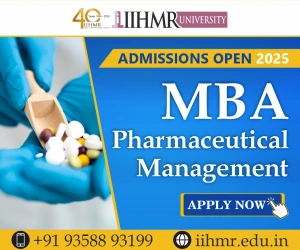PharmaTutor (November - 2017)
ISSN: 2347 - 7881
(Volume 5, Issue 11)
Received On: 24/07/2017; Accepted On: 09/08/2017; Published On: 01/11/2017
AUTHORS:
Ratikanta Sahoo, Pratyush Kumar Das*
Centre for Biotechnology,
Siksha ‘O’ Anusandhan University,
Bhubaneswar, Odisha, India
*pratyushdas@soauniversity.ac.in
ABSTRACT:
Bromelain is a plant protease present in different parts of the pineapple [Ananas Comosus (Linn.) Merr.] plant. It is an enzyme of high commercial interest which can be attributed to the wide therapeutic and industrial applications it possesses. As such efficient purification and recovery of the enzyme is utmost necessary on a large scale basis. The review highlights the numerous applications of the protease enzyme and further discusses the various purification techniques beginning from simpler ultrafiltration to the more complex and specific column chromatography that are being commonly employed nowadays. Effort has been made to compare the purification strategies extensively and suggest the best among the techniques which is cost-effective, has high output and can be used on a large scale production basis.
How to cite this article: Sahoo R, Das PK; Bromelain: Applications and Purification Strategies; PharmaTutor; 2017; 5(11); 40-48
[ABSTRACT WITH CITATION] [VIEW AS HTML]
REFERENCES:
1. Mondal S., BhattacharyaS.,PandeyJ. N.,BiswasM., “Evaluation of acute anti-inflammatory effect of AnanasComosus leaf extract in Rats”.Pharmocologyonline,2011;3; 1312–1315.
2. https://www.worldatlas.com/articles/top-pineapple-producing-countries.html (Visited 21 June, 2017).
3. TaussigS. J.,BatkinS., “Bromelain, the enzyme complex of pineapple (Ananascomosus) and its clinical application: an update”. Journal of Ethnopharmacology, 1988; 22(2); 191–203.
4. Rowan A.D., Buttle D.J., Barrett A.J., The cysteine proteinases of the pineapple plant.Biochem J, 1990; 226; 869-875.
5. HeinickeR. M.,Gortner,W. A., “Stem bromelain: a new protease preparation from pineapple plants”. Economic Botany, 1957; 11(3); 225–234.
6. Hale L.P., Greer P.K., Trinh C.T. James. C.L., Proteinase activity and stability of natural bromelain preparations. International Immunopharmacology, 2005; 5; 783-793.
7. Hebbar H.U., Sumana B.,Raghavarao K.S.M.S., Use of reverse micellar systems for the extraction and purification of bromelain from pineapple waste. Bioresourse Technology, 2008; 99; 4896-4902.
8. Chobotova K., Vernallis A.B. Abdul Majid F.A.,Bromelain’s activity and potential as an anti-cancer agent: Current evidence and perspectives. Cancer Letters, 2009; 20; 1-9.
9. Rabelo A.P.B., Tambourgi E.B.,Pessoa Jr. A.,Bromelain partitioning in two-phase aqueous systems containing PEO-PPO-PEO block copolymers. Journal of Chromatography B, 2004; 807; 61-68.
10. Bhattacharyya B.K.,Bromelain: An overview. Natural Product Radiance, 2008; 7(4); 359-363.
11. Fernández G. Pomilio A.B., Optimized growth conditions and determination of the catalytic type of the peptidase complex from a novel callus culture of pineapple (Ananascomosus). Molecular Medicinal Chemistry, 2003; 1; 39-49.
12. Castell J. V.,Friedrich G.,Kuhn C. S.,PoppeG. E., “Intestinal absorption of undegraded proteins in men: presence of bromelain in plasma after oral intake”. American Journal of Physiology,1997; 273(1); G139–G146.
13. HeinickeR. M.,van der WalL.,Yokoyama M., “Effect of bromelain (Ananase) on human platelet aggregation”.Experientia,1972; 28(10); 844–845.
14. World Health Organization, “Cardiovascular diseases,” 2011, https://www.who.int/cardiovascular diseases/en/.
15. MynottT. L.,GuandaliniS.,Raimondi F. FasanoA., “Bromelain prevents secretion caused by Vibrio cholera and Escherichia coli enterotoxins in rabbit ileum in vitro”. Gastroenterology, 1997; 113(1); 175–184.
16. MynottT. L., LukeR. K. J., ChandlerD. S., “Oral administration of pro tease inhibits enterotoxigenic Escherichia coli receptor activity in piglet small intestine”. Gut, 1996; 38(1); 28–32.
17. HouckJ. C., ChangC. M., KleinG., “Isolation of an effective debriding agent from the stems of pineapple plants”. International Journal of Tissue Reactions, 1983; 5(2); 125–134.
18. HuW., WangA. M., WuS. Y. et al., “Debriding effect of bromelain on firearm wounds in pigs”. The Journal of Trauma, 2011; 71(4); 966–972.
19. Stepek G., Buttle D.J., Duce I.R. et al., Assessment of the anthelmintic effect of natural plant cysteine proteinases against the gastrointestinal nematode, Heligmosomoidespolygyrus, in vitro. Parasitology, 2005; 130; 203-211.
20. Brakebusch M., Wintergerst U., Petropoulou T. et al.,Bromelain is an accelerator of phagocytosis, respiratory burst and killing of Candida albicans by human granulocytes and monocytes.Eur J Med Res 2001; 6; 193-200.
21. Neubauer R.A., A plant protease for potentiation of and possible replacement of antibiotics.Exp Med Surg 1961; 19; 143-160.
22. Knill-Jones R.P., Pearce H., Batten J. et al., Comparative trial of Nutrizym in chronic pancreatic insufficiency. Brit Med J 1970; 4; 21-24.
23. Wen S., Huang T.H., Li G.Q. et al.,Bromelain improves decrease in defecation in postoperative rats: modulation of colonic gene expression of inducible nitric oxide synthase. Life Sci, 2006;78; 995-1002.
24. Hale L.P., Greer P.K., Trinh C.T., Gottfried M.R., Treatment with oral bromelain decreases colonic inflammation in the IL-10-deficient murine model of inflammatory bowel disease.ClinImmunol, 2005; 116; 135-142.
25. Kane S., Goldberg M.J., Use of bromelain for mild ulcerative colitis. Ann Intern Med 2000; 132; 680.
26. Sebeková K., Dämmrich J., Krivosíková Z., Heidland A., The effect of oral protease administration in the rat remnant kidney model. Res Exp Med (Berl), 1999; 199(3); 177-188.
27. Walker A.F., Bundy R., Hicks S.M., Middleton R.W.,Bromelain reduces mild acute knee pain and improves well being in a dose dependant fashion in an open study of otherwise healthy adults.Phytomedicine, 2002;9; 681-686.
28. Brien S., Lewith G., Walker A.F. et al.,Bromelain as an adjunctive treatment for moderate-to-severe osteoarthritis of the knee: a randomized placebo-controlled pilot study. QJM, 2006;99; 841-850.
29. Cohen A., Goldman J.,Bromelainstherapy in rheumatoid arthritis. Penn Med J, 1964; 67; 27-30.
30. Inoue K., Motonaga A., Nishimura T. et al., Mechanism of anti-inflammatory action of etodolac.Arzneimittelforschung, 1991;41; 235-239.
31. Shoskes D.A., Zeitlin S.I., Shahed A., Rajfer J.,Quercetin in men with category III chronic prostatitis: a preliminary prospective, double-blind, placebo-controlled trial. Urology, 1999;54; 960-963.
32. Secor E.R., Carson W.F., Singh A. et al., Oralbromelain attenuates inflammation in anovalbumin-induced murine model of asthma.Evid Based Complement Alternat Med2008; 5; 61-69.
33. Taussig S.J., Szekerezes J., Batkin S., Inhibitionof tumor growth in vitro by bromelain, anextract of the pineapple plant (Ananascomosus). Planta Med, 1985;6; 538-539.
34. Nieper H.A., A program for the treatment ofcancer. Krebs, 1974;6; 124-127.
35. Báez R., Lopes M.T., Salas C.E., Hernández M.,In vivo antitumoral activity of stempineapple (Ananascomosus) bromelain.Planta Med, 2007;73; 1377-1383.
36. Hage D.S., Anguizola J.A., Bi C., Li R., Matsuda R., Papastavros E., Pfaunmiller E., Vargas J., Zheng X., Pharmaceutical and biomedicalapplications of affinity chromatography: recent trends anddevelopments. J Pharm Biomed Anal, 2012; 1-13
37. Chuapoehuk P., Raksakulthai N., Use of papain and bromelain inthe production of oyster sauce. ASEAN Food J, 1992; 7(4); 196–199
38. Kong X., Zhou H., Qian H., Enzymatic hydrolysis of wheat glutenby proteases and properties of the resulting hydrolysates. FoodChem, 2007; 102(3); 759–763.
39. Watanabe M., Watanabe J., Sonoyama K., Tanabe S., Novelmethod for producing hypoallergenic wheat flour by enzymaticfragmentation of the constituent allergens and its applicationto food processing. Biosci, Biotechnol, Biochem, 2000;64(12); 2663–2667.
40. Srinath R., Ramalingam C., Nasimun Islam N., Isolation and characterizationof bromelain from pineapple (Ananascomosus) andcomparing its anti-browning activity on apple juicewith commercialantibrowning agents. Elixir Food Sci, 2012; 45; 7822–7826.
41. Tománková O., Kopečný J., Prediction of feed protein degradationin the rumen with bromelain. Anim Feed SciTechnol, 1995; 53(1); 71–80.
42. Singh L.R., Devi Y.R., Devi S.K.,Enzymological characterization ofpineapple extract for potential application in oak tasar (Antheraeaproylei J.) silk cocoon cooking and reeling. Electron J Biotechnol, 2003;6(3); 198–207
43. Koh J., Kang S-M., Kim S-J., Cha M-K., Kwon Y-J., Effect ofpineapple protease on the characteristics of protein fibers. FibersPolym, 2006; 7(2); 180–185. doi:10.1007/bf02908264
44. Ozlen S.N., Chatsworth C., Cosmetic composition containing alphahydroxyacids, salicyclic acid, and enzyme mixture of bromelain andpapain. United States Patent 5, 1995; 441; 740.
45. Levy L.L., Emer J.J.,Complications of minimally invasive cosmeticprocedures: prevention andmanagement. J CutanAesthetSurg, 2012; 5(2);121–132.
46. Chakravarthy P.K., Acharya S., Efficacy of extrinsic stain removalby novel dentifrice containing papain and bromelain extracts. JYoung Pharm, 2012; 4(4); 245–249.
47. Walsh G., Proteins: biochemistry and biotechnology. JohnWiley&Sons Ltd, England, 2002.
48. Janson J-C., Protein purification: principles, high resolutionmethods, and applications, 3rd edition. John Wiley & Sons, 2011.
49. Soares P.A.G., Coelho D., Mazzola P., Silveira E., Carneiro-da-Cunha M.G.,Pessoa A.J., Tambourgi E., Studies on bromelain precipitationby ethanol, poly (ethylene glycol) and ammonium sulphate. ChemEng Trans, 2011; 24(5); 979–984.
50. Wheelwright S.M., Protein purification. Design and scale up ofdownstream processing. John Wiley & Sons, Inc, 1991.
51. Kumar V., Sharma V.K, Kalonia D.S., Effect of polyols on polyethyleneglycol (PEG)-induced precipitation of proteins: impact onsolubility, stability and conformation. Int J Pharm, 2009; 366(1–2); 38–43.
52. Hebbar U., Sumana B., Hemavathi A.B., Raghavarao K.S.M.S.,Separation and purification of bromelain by reverse micellar extractioncoupled ultrafiltration and comparative studies with othermethods. Food Bioprocess Tech, 2012; 5(3); 1010–1018.
53. Ketnawa S., Chaiwut P., Rawdkuen S., Pineapple wastes: a potentialsource for bromelain extraction. Food Bioprod Process, 2012; 90(3); 385–391.
54. Coelho D.F., Silveira E., Pessoa JuniorA., Tambourgi E.B.,Bromelainpurification through unconventional aqueous two-phase system(PEG/ammonium sulphate). Bioprocess BiosystEng,2013; 36(2); 185–192.
55. Babu B.R., Rastogi N.K., Raghavarao K.S.M.S., Liquid–liquid extractionof bromelain and polyphenol oxidase using aqueous two-phasesystem. ChemEng Process ProcessIntensif, 2008; 47(1); 83–89.
56. Chen D-H., Huang S-H., Fast separation of bromelain by polyacrylicacid-bound iron oxide magnetic nanoparticles. Process Biochem, 2004;39(12); 2207–2211.
57. Gupta P., Saleemuddin M.,Bioaffinity based oriented immobilizationof stem bromelain. BiotechnolLett, 2006; 28(12); 917–922
58. Song M-M., Nie H-L., Zhou Y-T., Zhu L-M., Bao J-Y., Affinity adsorption of bromelain on Reactive Red 120 immobilized magnetic composite particles. Sep SciTechnol, 2011; 46(3); 473–482.
59. Wheelwright S.M., Protein purification. Design and scale up ofdownstream processing. John Wiley & Sons, Inc, 1991.
60. Chaurasiya R.S., UmeshHebbar H., Extraction of bromelain frompineapple core and purification by RME and precipitation methods.Sep PurifTechnol, 2013; 111(0); 90–97.
61. Yin L., Sun C.K., Han X., Xu L., Xu Y., Qi Y., Peng J., Preparativepurification of bromelain (EC 3.4.22.33) from pineapple fruit byhigh-speed counter-current chromatography using a reverse-micellesolvent system. Food Chem, 2011; 129(3); 925–932.
62. Kumar S., Hemavathi A.B., Hebbar H.U., Affinity based reversemicellar extraction and purification of bromelain from pineapple(Ananascomosus L. Merryl) waste. Process Biochem, 2011; 46(5); 1216–1220.
63. Yamada F., Takahashi N., Murachi T., Purification and characterizationof a proteinase from pineapple fruit, fruit bromelain FA2. JBiochem, 1976; 79(6); 1223–1234.
64. Gautam S.S., Mishra S.K., Dash V., Goyal A.K., Rath G., Comparative study of extraction, purification and estimationof bromelain from stem and fruit of pineapple plant. Thai JPharm Sci, 2010; 34; 67–76.
65. Ota S., Muta E., Katahira Y., Okamoto Y., Reinvestigation offractionation and some properties of the proteolytically activecomponents of stem and fruit bromelains. J Biochem, 1985; 98(1); 219–228
66. Napper A.D., Bennett S.P., Borowski M., Holdridge M.B., Leonard M.J.,Rogers E.E., Duan Y., Laursen R.A., Reinhold B., Shames S.L.,Purification and characterization of multiple forms of the pineapplestem-derived cysteine proteinases ananain and comosain. BiochemJ, 1994;301; 727–735.
67. Arshad Z.I.M., Amid A., Yusof F., Jaswir I., Ahmad K., Loke S.P.,Bromelain: An overview of industrialapplication and purification strategies. ApplMicrobiolBiotechnol, 2014; 98; 7283–7297.















